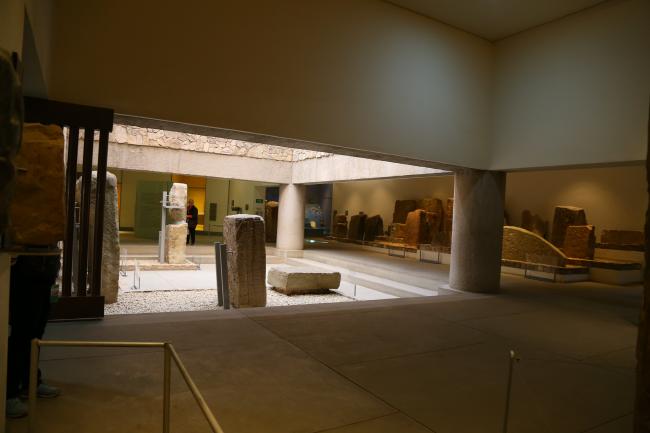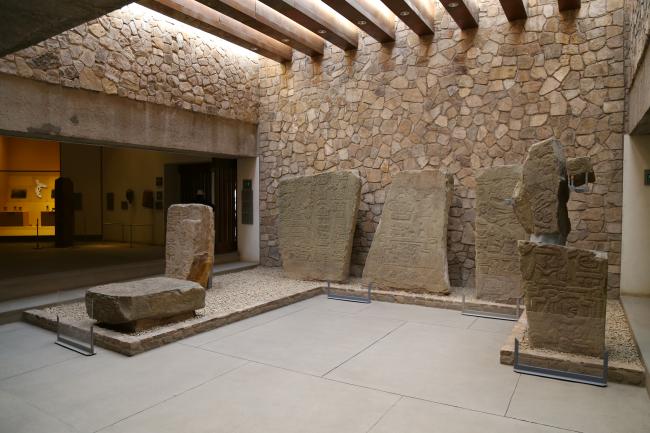
Area Six
Sala
Around the year 500 CE (Phase IIIA or early IIIB-IV), the Zapotecs extracted large greenstone slabs (volcanic tuff, or "cantera") from quarries in the valley—possibly from Ixcotel near Oaxaca City or the Etla Valley—and brought them up to Monte Albán. Epigrapher Javier Urcid has identified a complex sequence of how these stones were used.
Initially, they served as roofing for a small building—possibly on the South Platform—and were engraved on the sides with depictions of elite individuals (e.g., MA-SP-7), framed symbols, and glyphs. This was clearly a commemorative structure, as the same individuals appear on multiple sides of the stone.
Later, in the early IIIB-IV phase, the building was dismantled, and the faces of the slabs were carved with scenes such as a seated leader holding a staff of authority (MA-SP-1), alongside a long text that includes dates, actions, and possibly place names, though it has not been fully deciphered. Other slabs feature elite figures in the posture of prisoners, with bound arms, each standing atop a hill glyph that may indicate their place of origin (MA-SP-3 and 8). These slabs formed a narrative ensemble, similar to the MA-SP-1, 3, and 8 stones exhibited here. In the late IIIB-IV phase, this composition was also dismantled.
Some of the slabs were later reused as cornerstones on the South Platform, valued for their size and durability, which helped support the massive fill. Others were broken and scattered across the site. For example, MA-SP-5 was split in two, but still shows part of a prisoner figure, and its upper section was partially carved and worn down to serve as a column base.



